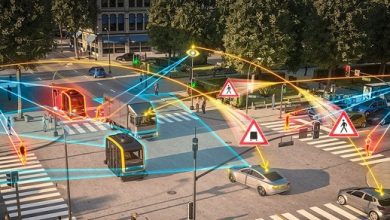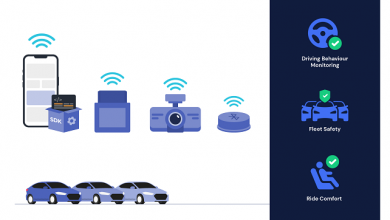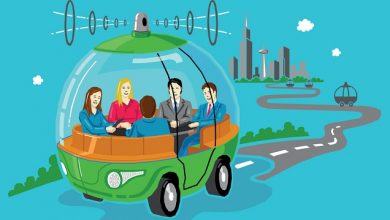New Frontiers of a Visionary Smart City Platform

- Smart City, the response to urbanization challenges
According to the United Nations (UN), although cities occupy only 3% of the earth’s surface, they are home to more than half of the world’s population, they are responsible for 70% of energy consumption and 75% of carbon emissions. These impressive and concerning data are a clear consequence of the massive urbanization of the 1950s. Such process is expected to continue in the coming decades: by 2030, the number of “megacities” with more than 10 million inhabitants could rise to 41, consuming 81% of the world’s resources. These statistical projections imply that by 2050, the urban population will reach 60% of the global one.
Currently, 54% of all people live in cities, it follows that the cities are the cause of most of our carbon emissions and energy use. They generate more than 70% of all carbon emissions, mainly from buildings, energy, and transport. Finally, they consume 78% of the world’s primary energy.
Cities today are the main locations of physical capital as well as human capital concentration. This attracts business activities and transform cities to centres of global competitiveness. Cities are becoming the hubs of the services-based world economy. The rising urban population, the growing necessity to efficiently manage the limited natural resources and carry out environmental sustainability, the emerging economic competitiveness, and the rising citizen’s expectations make evident a top commandment: a new urban model is needed.
Smart City is synonym with a complex ecosystem of people, processes, policies, technology, and other stakeholders capable of cooperating and working together to deliver a set of outcomes, i.e., services. This theoretical framework requires the integration of each functional area: Governance, Education, Energy, Infrastructure, Mobility, Healthcare, Buildings, Technology. Its ultimate purpose is increasing the quality of life of city-dwellers making cities more efficient, sustainable, and liveable.
The process of change towards a more liveable future and a more inclusive society for generations to come therefore begins in our cities.
Smart City, hence, means sustainable development.
- Smart Cities call for Smart and Shared Mobility
In a world where the propensity to move is always growing, where people commute to work every day and move for leisure, where goods and products of all kinds travel enormous distances, it is increasingly necessary to create a new, more sustainable mobility.
Mobility, understood in a broader sense, is also an expression of a certain culture: the idea of vehicle ownership as well as the mobility models, for instance, are basically the result of cultural conditioning that vary from country to country. In general, traditional models of vehicle ownership still play a central role in the commuting patterns integrated by partially electrified public transport networks.
Overall, the urban mobility patterns are significantly changing due to several factors, such as the development of a new mobility paradigm more user-centered and focused on seamless intermodal travel – known as MaaS –, the staggering increase in shared-use vehicle systems and the progressive the number of autonomous vehicles. All these mobility models ensure a chance to reduce transport costs, travel time and pollution, improve traffic congestion and road safety, readjust urban spaces currently used for parking, hence, to make our cities a more liveable and greener where to live.
Mobility is the lifeblood of our smart cities.
Mobility is source of socio-economic and environmental development.
Mobility is the hub of smart citizenship
Like all other traditional on-demand mobility services such as taxis, rental with and without driver, all Sharing Mobility services are characterized by being available upon users’ request, according to routes and times established for each specific case. However, the aspect that distinguishes Sharing Mobility services is that they are enabled by new digital technologies, mostly by the applications available on mobile devices. Technological innovation allows Sharing Mobility services to ensure performance comparable to those offered by traditional on-demand services, but at more accessible costs and often with higher performances.
- The Converging of Mobility and Energy
The electrification of the transport sector – through the substitution of internal combustion engines (ICEs) with electric vehicles (EVs) – is currently the main goal of national and local policies for cleaner mobility and strategic shift to make cities a smarter environment.
To have a greater and immediate impact in terms of CO₂ emissions reduction, the priority is electrifying public transport, mobility-as-a-service vehicles, taxis, fleets, and private cars as all these means of transportation represent a higher volume of daily miles travelled.
In this framework, E-Mobility results to be a main asset of Smart Mobility as key element to boost the change of paradigm in line with the international standards of greater sustainability, safety, and innovation.
The convergence of Mobility and Energy is hence evident, but somehow critical.
The increased uptake of electric vehicles (EVs) must be accompanied by a “smart” use and management of the electricity system. As highlighted in a McKinsey’s report (2018), electric vehicles do not create a power-demand crisis, but they can reasonably contribute to hourly peak demand and then, reshape the electricity load curve.
This implies that – if EV charging is not managed smartly – the current energy system is not able to support the expectable additional burden caused by the hourly peak demand in congested zones. On contrary, if charging is performed in smart way, the impact of a growing EV market could be not only neutral but also a benefit to the energy system.
In this context, the electric vehicles take on a role further than being tool of reducing greenhouse-gas and pollutants emissions from the transport sector. In a broader view, an e-vehicle is essentially a battery on wheels: a massive EVs deployment might even lead to an overall positive impact on the energy system if vehicles operate bidirectional charging (V2G) to enable extensive interaction with the grid.
This means going beyond the traditional concept of e-vehicles as simple means of transportation; they can have a broader role in the energy system as they represent a potentially huge additional demand for more electricity. Seen as a part of the electricity network, e-vehicle batteries are “moving storage” can greatly contribute to integrate renewable energy into the system, storing power when demand is low, and give it back into the grid system when demand is particularly high, and the primary resource is not available. Vehicle-to-grid technology, known as V2G, would allow cars charging during the day to take on surplus power from renewable energy sources.
Thanks to cutting-edge energy platforms capable of aggregating and managing the distributed energy resources, E-Mobility can be considered a grid flexibility solution for the power sector encouraging the decentralization of electricity production. The new frontier in this scenario of profound global change that the energy system is undergoing is embodied by “prosumers” able to generate, self-consume, store, and even give electricity back to the grid. This specific example leads us to hint at how the emergence of new business models across different industries will be encouraged, in the medium term, by the introduction of smart contracts capable of allowing commercial transactions without the need for a trusted intermediary thanks to Blockchain technology.
E-Mobility can therefore help to energy balance in the Smart Cities as it helps to promote the development of integrated local energy communities relying on renewable resources, totally autonomous and independent entities, and pioneers in new economic models and social innovation.
E-Mobility is also stimulating relevant investment in building new charging infrastructure and leading to take account of Energy and Buildings as crucial component of a single ecosystem.
Finally, E-Mobility contributes to fostering sharing and circular economy. Firstly, car sharing vehicles are usually used as “second car” for mainly urban trip, thus making the electric motor vehicle means of transportation extremely suitable for the distribution of shared transport services. Secondly, the rising issue of second life car batteries, that is batteries that are no longer highly performant for e-vehicles, but still have residual capacity between 70 and 80%, can be used for different application such as fuelling other type of vehicles, or as domestic batteries, stationary storage for electrical networks or short-circuit green energy distribution. This second-use application of lithium-ion batteries in fully line with circular economy principles.
In light of the above, the concept of SHARING emerges as one of the founding principles of the Smart City. Sharing is also caring for the ecosystem overall, for next generations, and commitment to build a better environment promoting the effective realization of a smart citizenship.
- Core Tech Principles for Smart City platforms
From technological view, a Smart City grounding principle is INTEGRATION.
Smart City is synonymous with integrated management of public and private services offered to citizens in smart mode. Cities, hence, are becoming the hubs of the services-based world economy; thus, cities around the world have mostly to cope with the same challenges including quality of life, mobility, environment, energy, sustainability, health and safety, security, and economic growth.
As it clearly emerges in McKinsey’s graphic representation (2018), the Smart City ecosystem involves three main layers: physical devices, connectivity, services.
Emerging technologies and technology innovation play a key role to integrate these three founding layers and produce systemic outcomes.
Market availability of Smart City Internet of Things (IoT) platforms is growing rapidly, and their architecture is becoming more sophisticated and modular. Cloud is probably the most disruptive driver of this radically new data-architecture approach, as it offers companies a way to quickly implement AI technologies for competitive advantage. Thus, todays’ platforms are mainly cloud-hosted solutions that connect devices, collect, match, and manage data from different city domains and microservices’ providers to provide a holistic view of a city. In addition to these main functionalities, such platforms are designed to swiftly deploy horizontal new solutions (i.e., core and value-added services), both developed in-house and via an ecosystem of providers such as vertical specialists and local suppliers.
Today’s great challenge for Smart Cities is developing an organic meta-platform capable of integrating devices, connectivity, data, apps providing core and value-added services.
From a technological perspective, to create a connected Smart City ecosystem it is necessary to develop cross‐sectoral platforms designed for services’ integration. Realizing a connected Smart City ecosystem comes through the development of comprehensive and integrated solutions both at foundational infrastructure and IoT software level.
The combined development of different emerging technologies – Smart IoT sensors, Artificial Intelligence and Blockchain – can help to integrate the above three layers, that is, physical, digital, and operational infrastructure and to unlock the huge unexpressed potential deriving from the huge number of single apps and platforms focused on a better quality of life. Everything revolves around real-time data, nowadays. Extracting, processing, refining, and storing data in proper and secure way is doubtlessly a top commandment. Starting from a more accurate and automated collection of environmental data through smart sensors, passing through the definition of complex algorithms up to ensuring transparency, inalterability, and data security thanks to Blockchain technologies.
In light of the above, the adoption of a platform-based approach, therefore, appears to be essential.
It is clear how the success of Smart City platforms mostly depends on the platforms’ ability to attract and nurture developers, SaaS companies, systems integrators, and other IT vendors to build value-added and customized solutions on the top of the platform.
In this collaborative platform-based model, where each ecosystem component is strictly interwoven and, hence, interdependent on the other one, OPENESS emerges as the second founding principle of Smart City framework. Smart City platforms that expose data via open and fully documented APIs released under open-source license and extensible tools can ensure direct and secure access to these one and provide the most value to users. Some vendors also make available libraries and full software development kits (SDKs).
Open-source cloud infrastructure platform supports building a more inclusive, and sustainable digital society and promoting a smart citizenship.
However, this cooperative approach does not always translate quickly into a concrete and tangible progress due to open platform are not able to ensure full interoperability to support third-party innovation.
From one hand, if the implementation of interoperability mechanism such as standard-based open APIs is essential to successfully replicate solutions and outcomes to more efficient management of municipal services (for instance, Mobility, Energy, Healthcare, Infrastructure, Buildings industry) and private services; from another hand, this is not enough to ensure complete interoperability.
Interoperability, thus, depends on open and shared standards.
GLOBAL TECHNOLOGY STANDARDS, therefore, result to be the third founding principle of Smart City tech ecosystem, as essential requirements to deal with the heterogeneous sensors and IoT platforms.
The achievement of a full technical interoperability capable of allowing connectivity and the exchange of interpretable data between all conceivable Smart City players, services, and devices on a global scale, emerges, therefore, as the roadmap to follow in the field of technological development and innovation.
In this framework, such “visionary” Smart City platform is outlined as the hub of an ecosystem of technological sub-ecosystems – i.e., an organic meta-platform – where applications, products, and services, verticalized by industries, might be readily available to end users.
In the meantime, given this medium to long-term tech horizon, successful Smart City platforms must be open source, cross-industries and, thus, focused on overcoming the traditional siloed approach based on customized and proprietary solutions that still exists in the management of urban services.
Authors:

Domenico Mangiacapra
President
Henshin Group Ltd
He has been working for many years around new tech mobility platforms. Currently, he is the CEO of Henshin Group, a tech company that developed MOVENS, the Open Source Platform Ecosystem for Mobility and Energy Industries designed to be the Hub of IoT in the Smart City.

Claudia Damari
External Relations
Henshin Group Ltd
Claudia Damari has extensive teaching experience and commitment to academic life and research in Italy and U.S. She also worked on projects on human mobility in the field of social research and scientific cooperation at both the theoretical and empirical level in Italy and Israel. Currently, she is External Relations at Henshin Group.
Published in Telematics Wire





